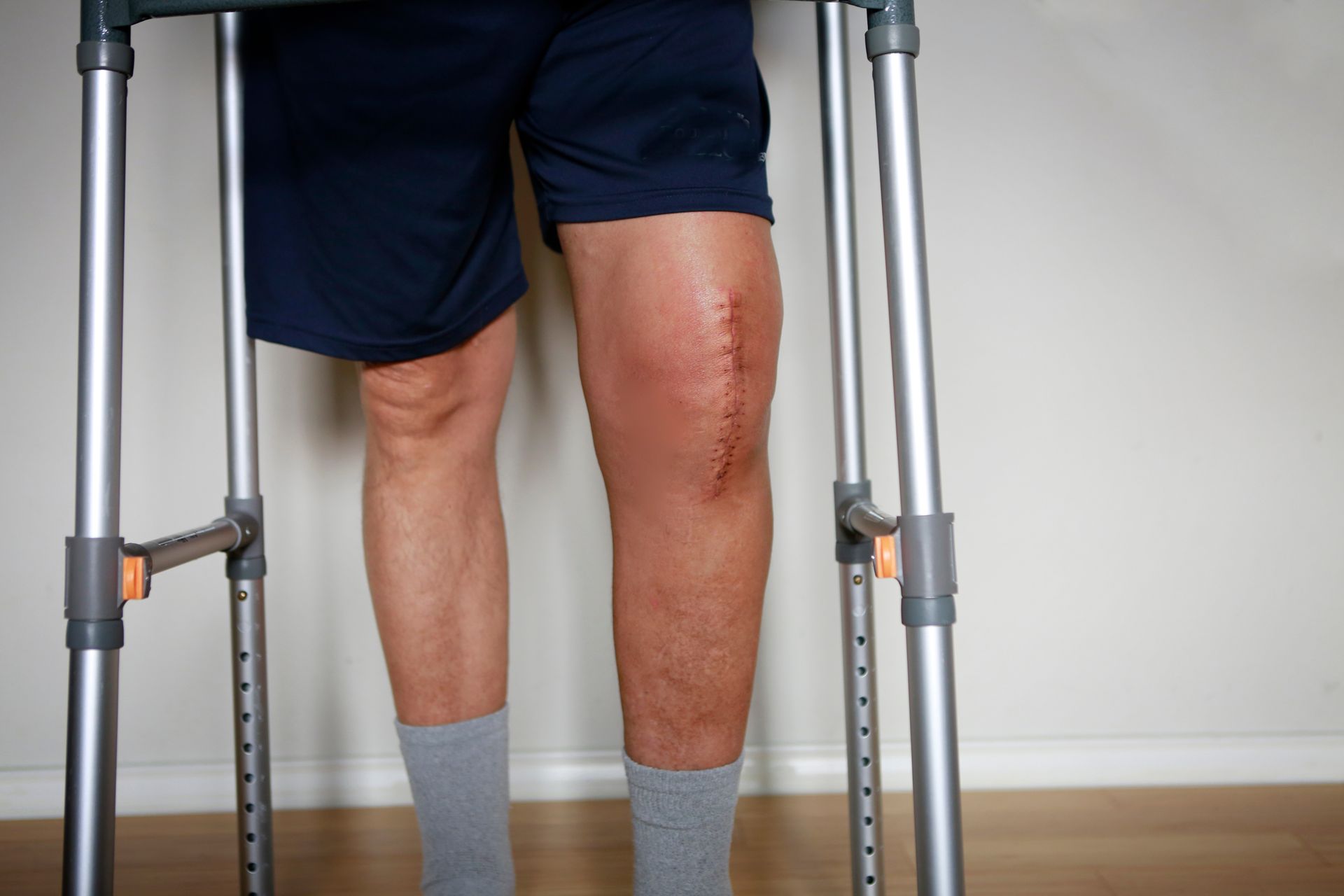Knee Replacements in Baton Rouge
RELATED PAGES
Knee Replacement Overview
The knee is not only the largest joint in the body, it is one of the most susceptible to osteoarthritis and other causes of degeneration. Each year, nearly 1 million patients undergo knee replacement surgery to address increasing pain, stiffness, and loss of mobility. Fortunately, these procedures are well-refined and highly successful, with over 90 percent of patients reporting improvement in their symptoms post-recovery.
Reasons to Consider Knee Replacement
Knee pain and stiffness that has become severe enough to interfere with daily life and that is no longer responding to less invasive treatment options may make you a candidate for a total knee replacement. Indicators that the condition has progressed to the point of joint replacement may include:
- Persistent and recurring pain in the knee that worsens with activity and interferes with daily activities
- Pain in the knee that occurs even while at rest
- Pain that does not improve with medication or other treatment options
- Knee swelling and inflammation that is not improved by medication or rest
Knee Replacement Components
There are three bone surfaces within the knee joint that may be replaced by artificial components comprised of metal, plastic, and other durable materials. These include:
- End of the Femur - The lower end of the large thigh-bone, or femur, is replaced with a smooth, rounded metal end, which is grooved to provide seamless movement with the kneecap.
- End of the Tibia - The upper end of the shin-bone, or tibia, is also replaced. This piece is usually flat metal topped with a durable, plastic cushion. Variations may also include a metal stem that fits into the middle of the tibia or may bypass the metal components entirely.
- Kneecap - Not all knee replacements involve resurfacing of the patella, or kneecap, but in those that do, the artificial pieces are designed to align with its back surface. These dome-shaped pieces of plastic sit behind the patella and provide a smooth, strong encasement for the new joint.
Within these three main parts, there are many design and material options, as well as different considerations regarding the knee ligaments. Determining which may be best for a patient is a decision that will be reached with their surgeon, based on their own specific needs.
Preparing for Knee Replacement
Having reached the decision to undergo knee replacement, there are some steps that you will need to take in order to prepare:
- Medical Evaluation - Determining a patient's candidacy for knee replacement can include many potential tests and examinations. An orthopedic physician may complete a physical exam, take medical history, and order imaging tests such as x-rays. Patients may also need to submit blood and urine samples, and those with chronic conditions may need additional clearance from other medical specialists.
- Medications - It is imperative when undergoing surgery of any kind to let the surgeon know about any and all medications that you are taking. These include both prescription and over-the-counter medications and everything from vitamins to pain relievers.
- Post-Operative Planning - Recovery from knee replacement is a long process and can take several weeks to completely resume normal activity. Patients should be prepared with help for tasks at home and transportation. Likewise, some schedule adjustments may need to be made to accommodate follow-up doctor appointments and therapy.
What to Expect After Knee Replacement
In the days, weeks, and months following a knee replacement, there are certain precautions that must be taken to ensure proper recovery. Here is what a typical patient can expect after their procedure:
- Hospital Stay - Most patients can leave the hospital within 1 to 3 days of their procedure. In order to be discharged, patients should be able to get out of bed and walk short distances with the aid of crutches or a walker.
- Physical Therapy - Physical therapy to strengthen the knee will begin soon after surgery. These exercises are important to allow the knee to heal fully and to restore mobility. Therapy will typically last for several weeks.
- Returning to Activity - Most normal daily activity can be resumed within 3 to 6 weeks of surgery. However, each patient is different, and it is important to get clearance from your orthopedic surgeon before resuming or beginning any new activity.
Knee Replacement Surgeons in Baton Rouge
JOSEPH E. BROYLES, M.D.
Joint Replacement Surgery
Hip and Knee Arthroscopy
Cartilage Regeneration
ARTHUR E. HESS, M.D.
Pediatric & Adult Orthopedic Trauma
Hip, Knee & Shoulder Reconstruction
Hip Preservation
Total Joint Replacement Surgery
Robot-assisted total knee arthroplasty
General Orthopedics
RELATED READING
Knee Replacement Blogs

MOVE MORE, HURT LESS.
7301 Hennessy Blvd.
Suite 200
Baton Rouge, LA 70808
tel: (225) 766-0050
fax: (225) 766-1499
Bone & Joint Clinic of Baton Rouge, Inc. complies with applicable Federal civil rights laws and does not discriminate on the basis of race, color, national origin, age, disability or sex.
Click to view our notice.
Bone & Joint Clinic of Baton Rouge | All Rights Reserved.




